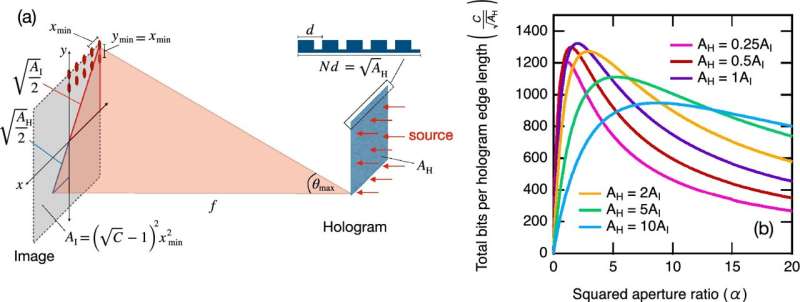This article has been reviewed according to Science X's editorial process and policies. Editors have highlighted the following attributes while ensuring the content's credibility:
fact-checked
trusted source
proofread
Holographic message encoded in simple plastic

There are many ways to store data—digitally, on a hard disk, or using analog storage technology, for example as a hologram. In most cases, it is technically quite complicated to create a hologram: High-precision laser technology is normally used for this.
However, if the aim is simply to store data in a physical object, then holography can be done quite easily, as has now been demonstrated at TU Wien: A 3D printer can be used to produce a panel from normal plastic in which a QR code can be stored, for example. The message is read using terahertz rays—electromagnetic radiation that is invisible to the human eye.
The research is published in the journal Scientific Reports.
The hologram as a data storage device
A hologram is completely different from an ordinary image. In an ordinary image, each pixel has a clearly defined position. If you tear off a piece of the picture, a part of the content is lost.
In a hologram, however, the image is formed by contributions from all areas of the hologram simultaneously. If you take away a piece of the hologram, the rest can still create the complete image (albeit perhaps a blurrier version). With the hologram, the information is not stored pixel by pixel, but rather, all of the information is spread out over the whole hologram.
"We have applied this principle to terahertz beams," says Evan Constable from the Institute of Solid State Physics at TU Wien. "These are electromagnetic rays in the range of around one hundred to several thousand gigahertz, comparable to the radiation of a cell phone or a microwave oven—but with a significantly higher frequency."
This terahertz radiation is sent to a thin plastic plate. This plate is almost transparent to the terahertz rays, but it has a higher refractive index than the surrounding air, so at each point of the plate, it changes the incident wave a little. "A wave then emanates from each point of the plate, and all these waves interfere with each other," says Constable. "If you have adjusted the thickness of the plate in just the right way, point by point, then the superposition of all these waves produces exactly the desired image."
It is similar to throwing lots of little stones into a pond in a precisely calculated way so that the water waves from all these stones add up to a very specific overall wave pattern.
A piece of cheap plastic as a high-tech storage unit for valuable items
In this way, it was possible to encode a Bitcoin wallet address (consisting of 256 bits) in a piece of plastic. By shining terahertz rays of the correct wavelength through this plastic plate, a terahertz ray image is created that produces exactly the desired code. "In this way, you can securely store a value of tens of thousands of euros in an object that only costs a few cents," says Constable.
In order for the plate to generate the correct code, one first has to calculate how thick the plate has to be at each point, so that it changes the terahertz wave in exactly the right way. Constable and his collaborators made the code for obtaining this thickness profile available for free on GitHub.
"Once you have this thickness profile, all you need is an ordinary 3D printer to print the plate and you have the desired information stored holographically," explains Constable. The aim of the research work was not only to make holography with terahertz waves possible, but also to demonstrate how well the technology for working with these waves has progressed and how precisely this still rather unusual range of electromagnetic radiation can already be used today.
More information: E. Constable et al, Encoding terahertz holographic bits with a computer-generated 3D-printed phase plate, Scientific Reports (2024). DOI: 10.1038/s41598-024-56113-2
Provided by Vienna University of Technology




















